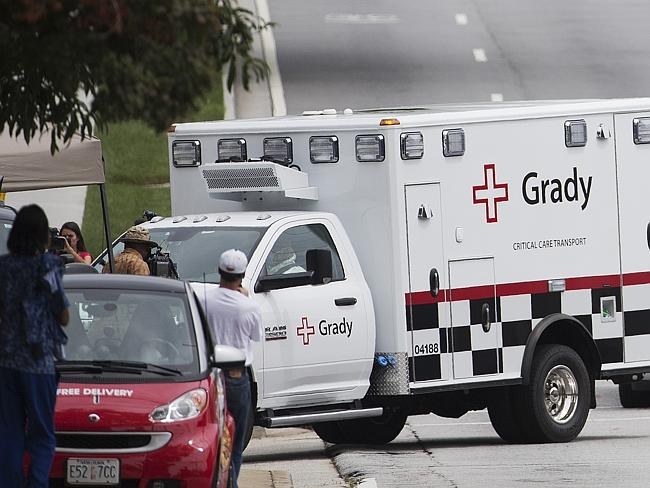
MEDICAL experts are optimistic after a US doctor who contracted Ebola in West Africa was filmed walking into a hospital after being flown back to America.
Two specialists told America’s ABC News that the apparent condition of Dr Kent Brantly 10 days after first showing symptoms was a “good sign”.
Dr Kent Brantly arrived for treatment on a medical plane which landed at Dobbins Air Reserve Base in Georgia shortly after 11am (1am AEST).
It is the first time the deadly virus has been on American soil.
He was taken immediately to Emory University Hospital in Atlanta where CNN showed aerial footage of a figure in a hazard suit, believed to be Dr Brantly, being helped out of the back of an ambulance then walking into the hospital. The Ebola victim will be treated at the hospital’s special care isolation units.
Infectious disease specialist Dr William Schaffner, of Vanderbilt University School of Medicine, noted Dr Brantly didn’t require a ventilator.
“The first thing we all said ‘Whoa he’s not on a vent’,” he told the ABC.
“In general (with) Ebola is … you progress on a downhill course. If you’re at this point and you’re holding your own you’re entitled to be optimistic.”
Dr Stephen Morse, a professor of Epidemiology at the Columbia University Mailman School of Public Health, said: “If you can walk in, that’s a very good sign. I was surprised but pleasantly.”
Another American health worker, Nancy Writebol, who is fighting for her life after contracting Ebola in the same outbreak in Liberia, was also being flown back home for treatment. Though it was not yet known when she would arrive.

Both patients were being flown home on a Gulfstream private jet which had been fitted with a collapsible, mobile isolation unit designed to transfer employees from the US Centers for Disease Control and Prevention (CDC) exposed to contagious diseases.
It’s believed to be the first time a patient infected with Ebola has been treated anywhere in the US.
The latest outbreak of the haemorrhagic fever in west Africa has killed 729 people of the more than 1300 infected since March.
The World Health Organization has said the fast-moving outbreak was causing “catastrophic” loss of life in the affected countries of Guinea, Liberia, Nigeria and Sierra Leone.
The deadly disease is spread through direct contact with blood or other bodily fluids from an infected person. The incubation period is between 2 and 21 days with symptoms including a sudden fever, feelings of weakness, muscle pain, headache and sore throats.
This leads to vomiting, diarrhoea, rashes, organ failure and unstoppable bleeding. Fatality rates range from 60 to 90 per cent. The latest outbreak is the largest since the virus was first identified in 1976.

